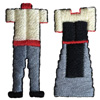 Ukrainian traditional clothing is rather diverse. The festive outfits are always colorful and rich in embroidery and bright decorations. But there are certain regional features that help to distinguish the attires according to the area of origin. Here you are the collection of the folk costumes from different regions of Ukraine that belongs to the Museum of Ethnography and Crafts in Lviv (western Ukraine).
Ukrainian traditional clothing is rather diverse. The festive outfits are always colorful and rich in embroidery and bright decorations. But there are certain regional features that help to distinguish the attires according to the area of origin. Here you are the collection of the folk costumes from different regions of Ukraine that belongs to the Museum of Ethnography and Crafts in Lviv (western Ukraine).
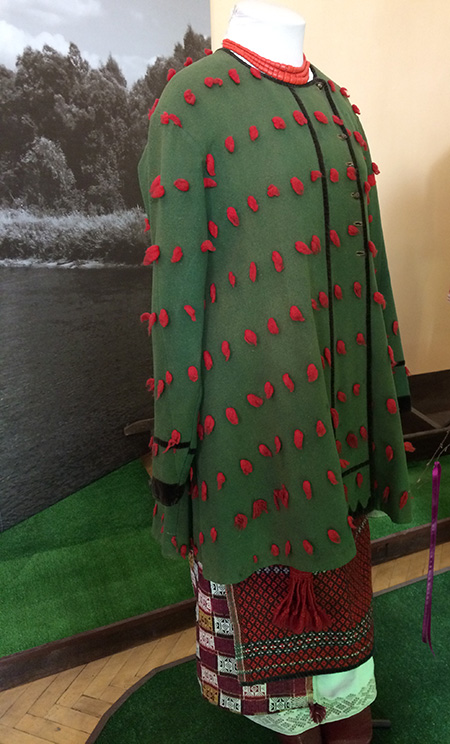
Set of female clothes from Kyiv region (northern part of Ukraine), the beginning of the 20th century. It consists of a shirt, a coat called “yupka” (adorned with yarn decorations), a wrap-around skirt called “plakhta”, an apron called “zapaska”, boots, and coral necklace
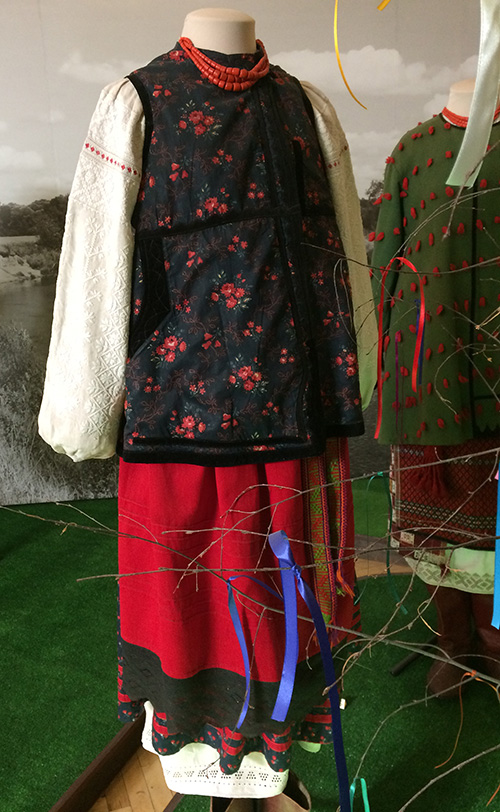
Set of female clothes from Kyiv region (northern part of Ukraine), the beginning of the 20th century. It consists of a shirt, a skirt, an apron, a fabric belt, a sleeveless jacket called “korsetka”, leather boots, and a coral necklace
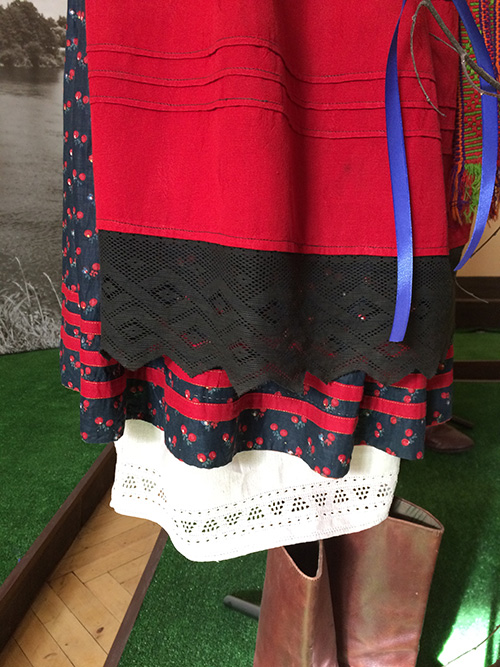
Set of female clothes from Kyiv region (northern part of Ukraine), the beginning of the 20th century. Close-up view. You can see the hem of the shirt, the skirt, and apron

Women’s embroidered shirt and coral necklace from central regions of Ukraine, the early 20th century
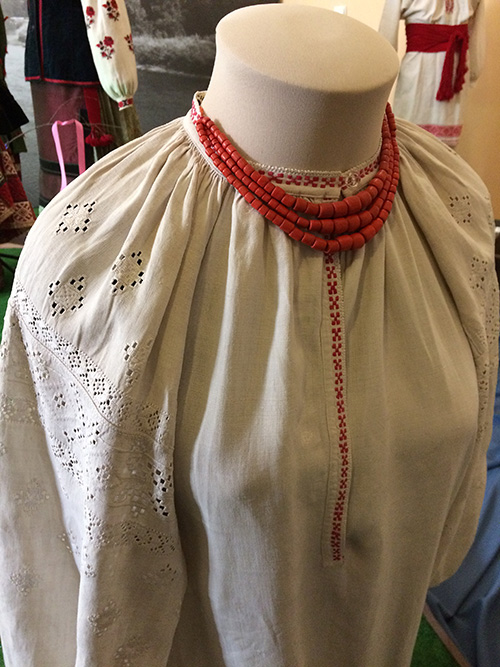
Women’s embroidered shirt and coral necklace from central regions of Ukraine, the early 20th century. Close-up view
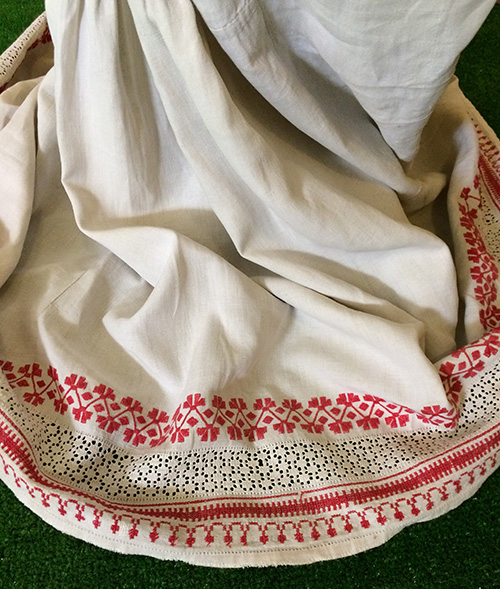
Hem of a female embroidered shirt from central regions of Ukraine, the early 20th century. Close-up view
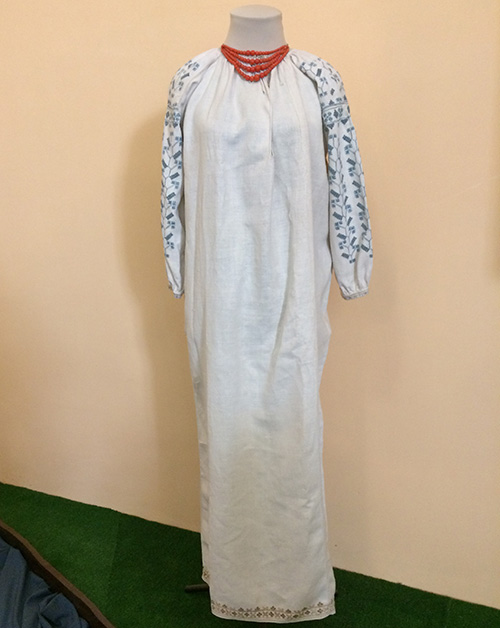
Female embroidered shirt and coral necklace from central regions of Ukraine, the early 20th century
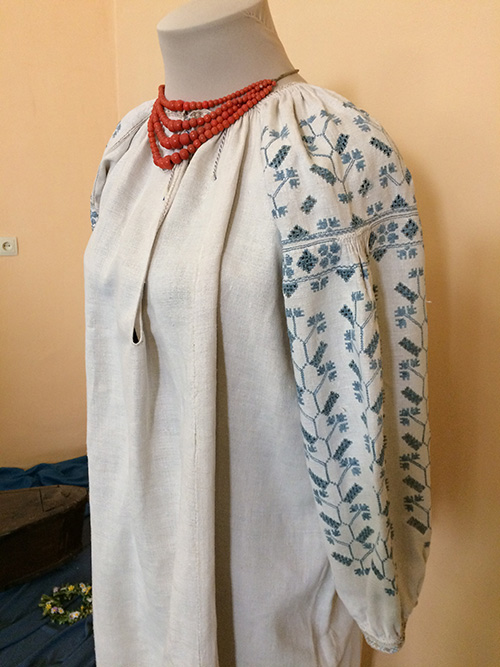
Female embroidered shirt and coral necklace from central regions of Ukraine, the early 20th century. Close-up view
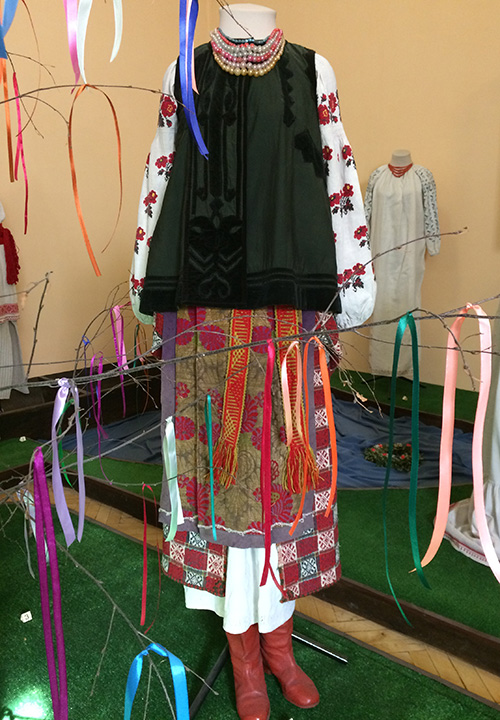
Set of female clothing from Poltava region (central part of Ukraine), the early 20th century. It consists of a shirt, a wrap-around skirt called “plakhta”, an apron called “zapaska”, a fabric belt, a sleeveless jacket called “korsetka”, boots, and necklace

Set of female clothing from Poltava region (central part of Ukraine), the early 20th century. Close-up view. You can see the sleeveless jacket called “korsetka” decorated with velvet applique

Set of female clothing from Poltava region (central part of Ukraine), the early 20th century. Close-up view. You can see the beaded necklace up close
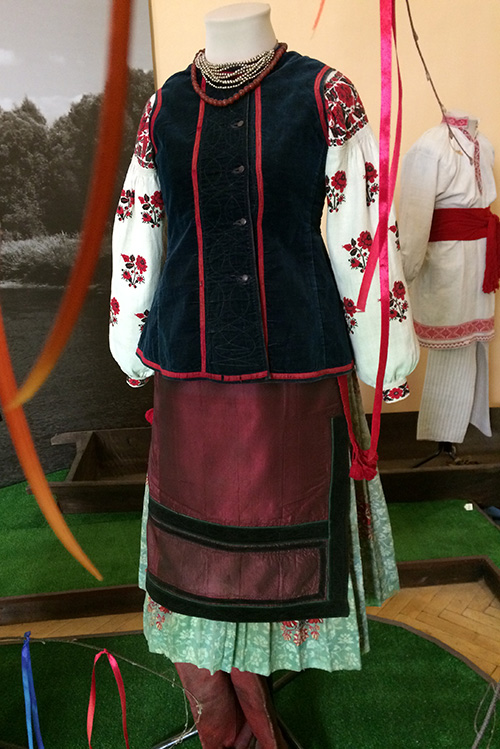
Set of women’s clothes from central regions of Ukraine, the early 20th century. It consists of a shirt, a skirt, an apron, a sleeveless jacket called “korsetka”, boots, and necklace

Set of women’s clothes from central regions of Ukraine, the early 20th century. Close-up view. You can see the embroidery pattern on the shirt, velvet sleeveless jacket called “korsetka”, and necklaces up close
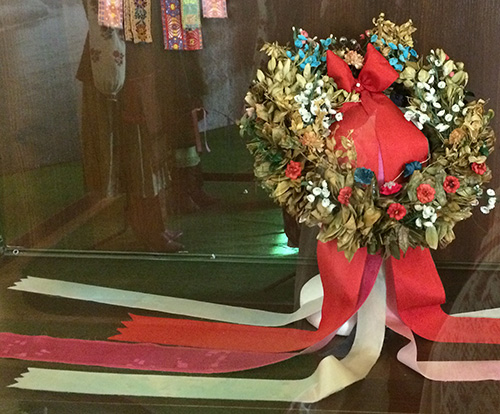
Female wedding wreath from central regions of Ukraine, the early 20th century. It is made from artificial flowers and decorated with long ribbons
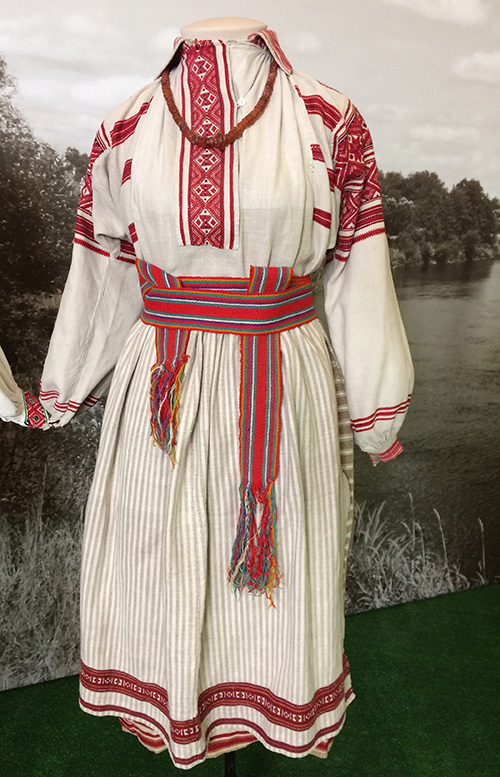
Set of women’s clothing from Polissia region (northern part of Ukraine), the beginning of the 20th century. It consists of a shirt, a skirt, an apron, a fabric belt, bast shoes called “lychaky”, and a necklace
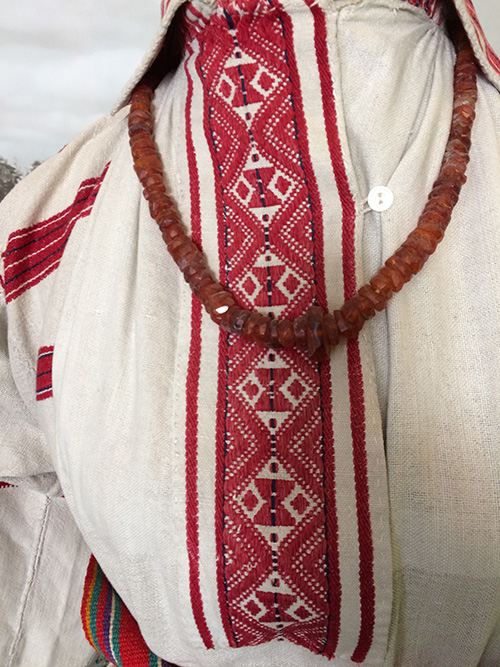
Set of women’s clothing from Polissia region (northern part of Ukraine), the beginning of the 20th century. Close-up view. You can see the embroidery pattern on the shirt and the necklace
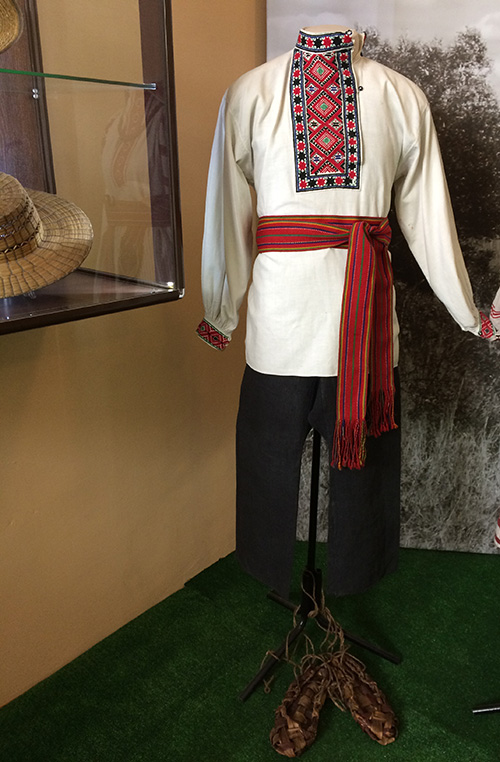
Set of men’s clothing from Polissia region (northern part of Ukraine), the beginning of the 20th century. It consists of a shirt (worn loose over the pants), trousers, a fabric belt, and bast shoes called “lychaky”
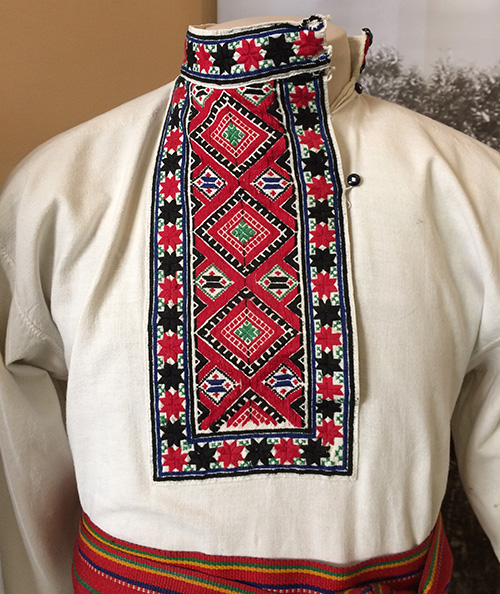
Set of men’s clothing from Polissia region (northern part of Ukraine), the beginning of the 20th century. Close-up view. You can see the bright embroidery pattern on the front of the shirt
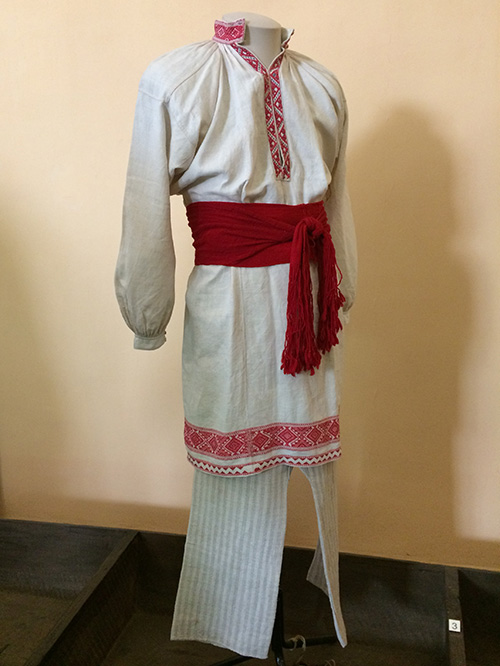
Set of men’s clothing from Polissia region (northern part of Ukraine), the beginning of the 20th century. It consists of a long shirt (worn loose over the pants), trousers, a fabric belt, and bast shoes called “lychaky”
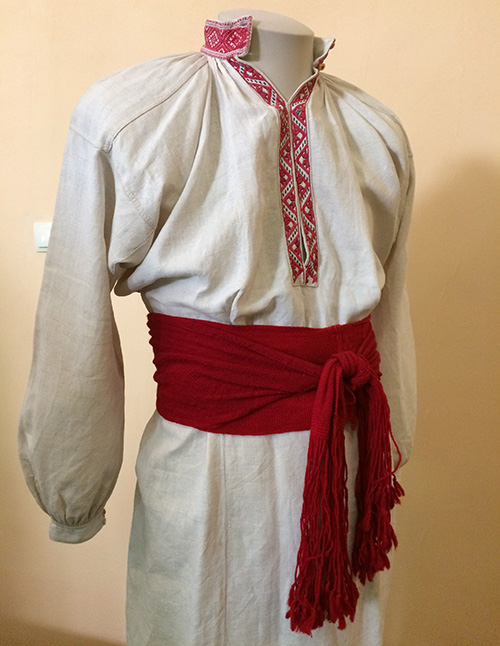
Set of men’s clothing from Polissia region (northern part of Ukraine), the beginning of the 20th century. Close-up view
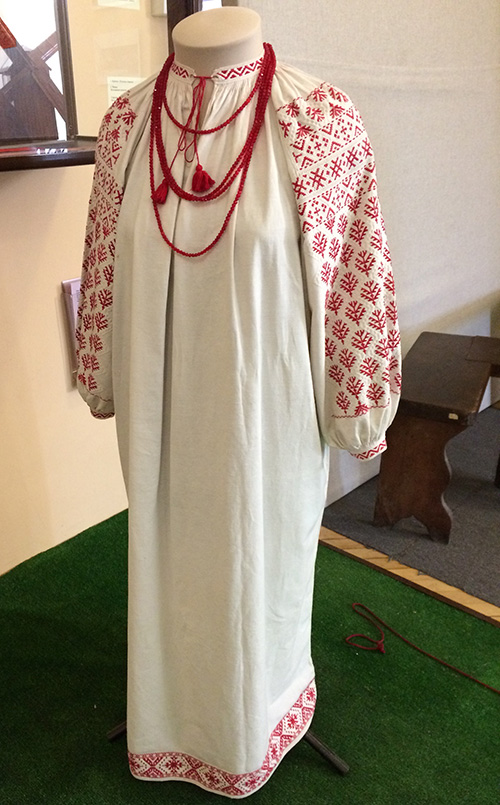
Female embroidered shirt and glass necklace from Polissia region (northern part of Ukraine), the beginning of the 20th century

Female embroidered shirt and glass necklace from Polissia region (northern part of Ukraine), the beginning of the 20th century. Close-up view

Set of female clothes from the eastern Podillia region of Ukraine (western part of the country), the early 20th century. It consists of a blouse, a wrap-around skirt called “horbatka”, a wide fabric belt, a kerchief, high boots, a coral necklace, and a necklace with coins
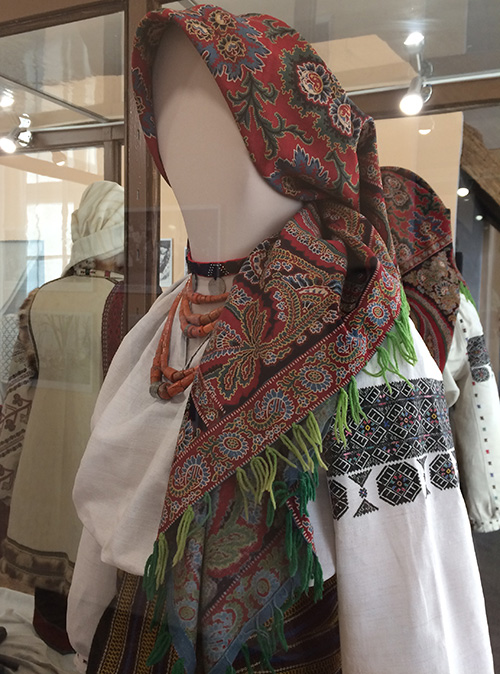
Set of female clothes from the eastern Podillia region of Ukraine (western part of the country), the early 20th century. Close-up view
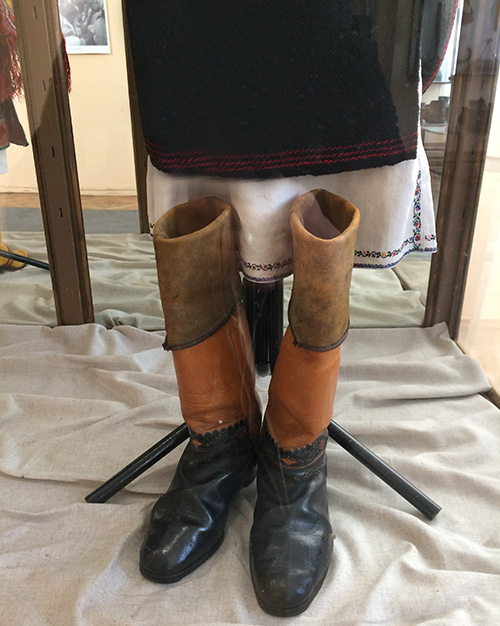
High female leather boots called “chornobryvtsi” (it is translated as “marigold”). Eastern Podillia region of Ukraine (western part of the country), the early 20th century

Set of female clothing from Bukovyna region of Ukraine (southwestern part of the country), the early 20th century. It consists of a blouse, a wrap-around skirt called “obhortka”, a fabric belt, a sleeveless fur coat called “muntian”, a headdress called “namitka”, high boots, a coral necklace, and a bag called “taistra”
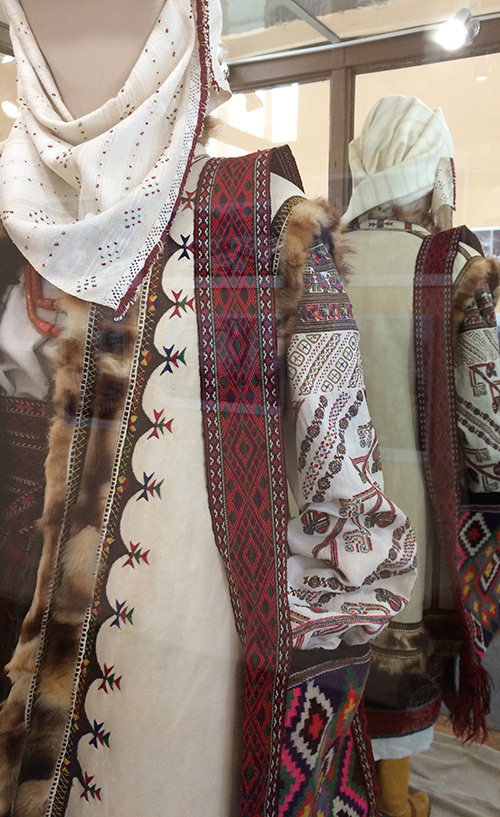
Set of female clothing from Bukovyna region of Ukraine (southwestern part of the country), the early 20th century. Close-up view. You can see the embroidery patterns up close
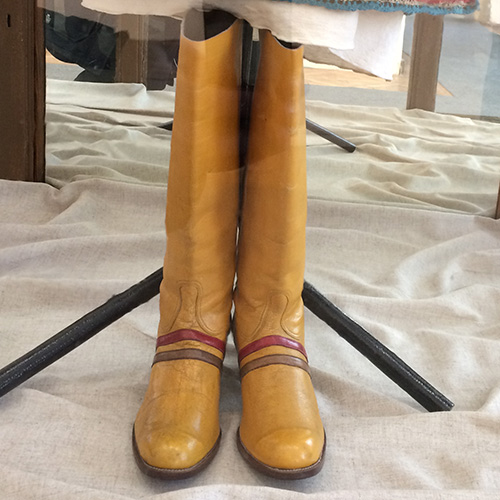
High female leather boots called “kondury”. Bukovyna region of Ukraine (southwestern part of the country), the early 20th century
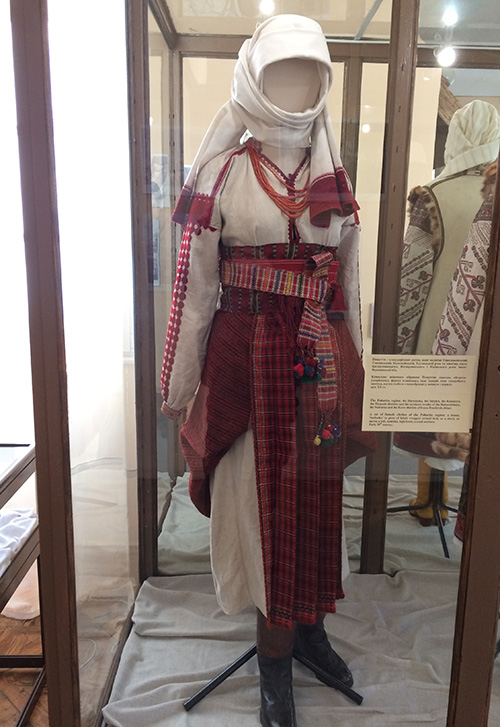
Set of women’s clothes from Pokuttia region of Ukraine (western part of the country), the early 20th century. It consists of a blouse, a wrap-around skirt called “horbatka”, an apron called “zapaska”, a fabric belt, a headdress called “namitka”, high leather boots, and a coral necklace
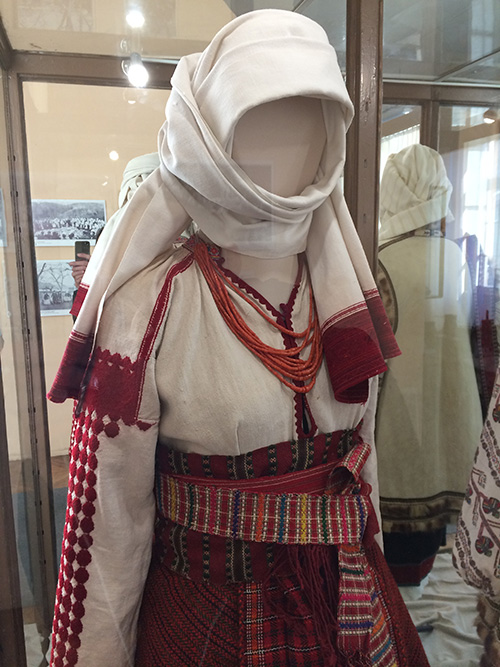
Set of women’s clothes from Pokuttia region of Ukraine (western part of the country), the early 20th century. Close-up view

Set of women’s clothes from Pokuttia region of Ukraine (western part of the country), the early 20th century. Close-up view. You can see the skirt, apron, and belt up close
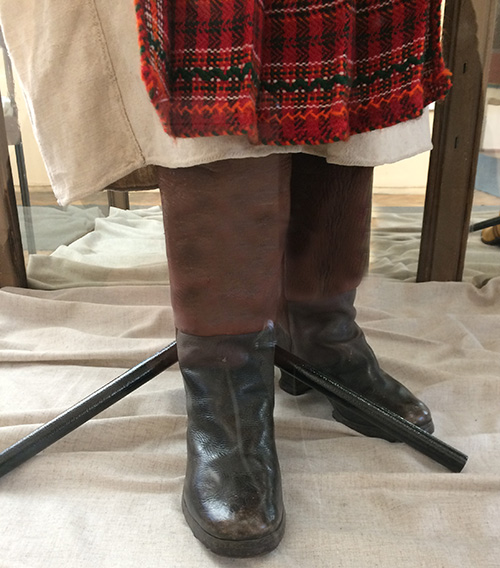
High female leather boots called “chornobryvtsi” (it is translated as “marigold”). Pokuttia region of Ukraine (western part of the country), the early 20th century

Traditional village house interior from Podillia region of Ukraine (western part of the country), the early 20th century
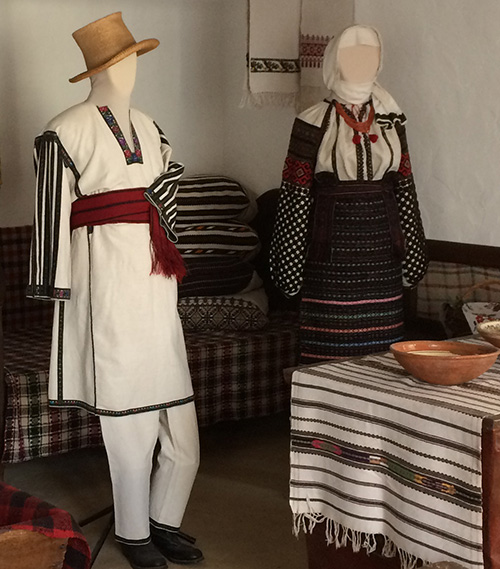
Vintage male and female folk outfits from Podillia region of Ukraine (western part of the country), the early 20th century
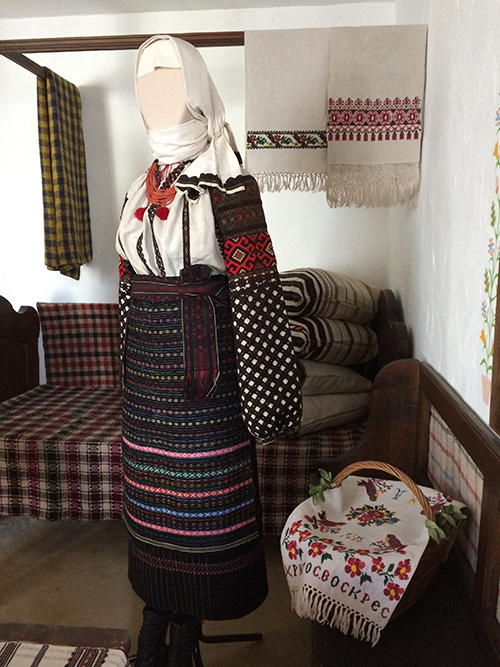
Set of female clothing from Podillia region of Ukraine (western part of the country), the early 20th century. It consists of a blouse, a wrap-around skirt called “horbatka”, an apron called “zapaska”, a fabric belt, a headdress called “namitka”, shoes, and a coral necklace
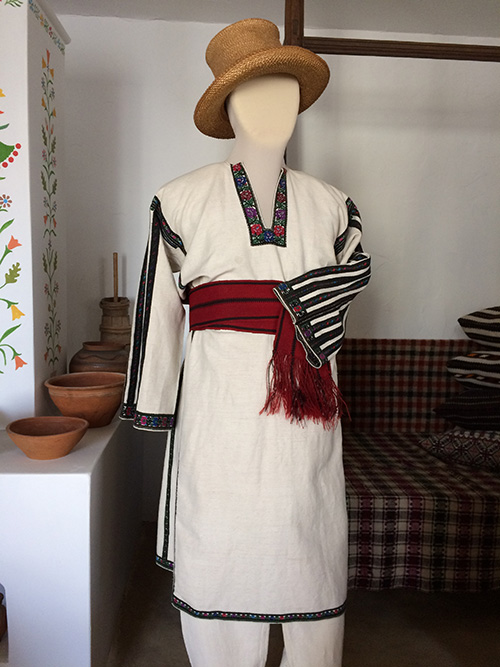
Set of male clothing from Podillia region of Ukraine (western part of the country), the early 20th century. It consists of a shirt, trousers, a fabric belt, a straw hat, and high boots
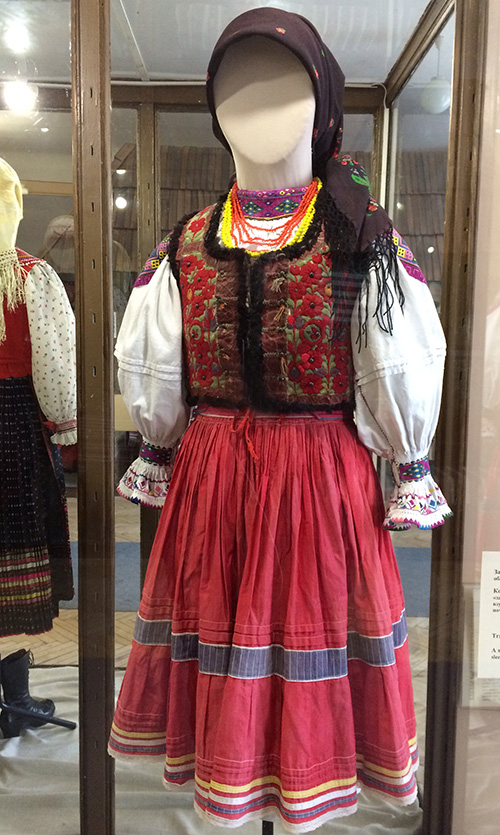
Set of women’s clothes from Transcarpathian region of Ukraine (the most western part of the country), the early 20th century. It consists of a long blouse, an apron called “plat”, a sleeveless jacket called “bunda”, a kerchief, shoes, and a necklace
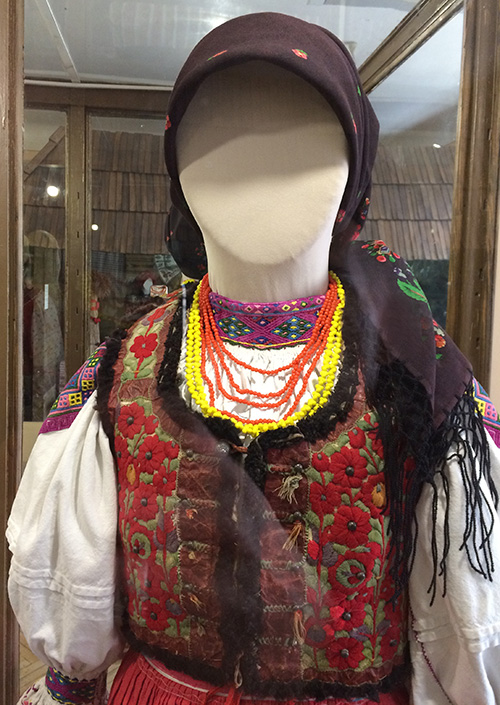
Set of women’s clothes from Transcarpathian region of Ukraine (the most western part of the country), the early 20th century. Close-up view. You can see the embroidery pattern on the sleeveless jacket called “bunda” up close
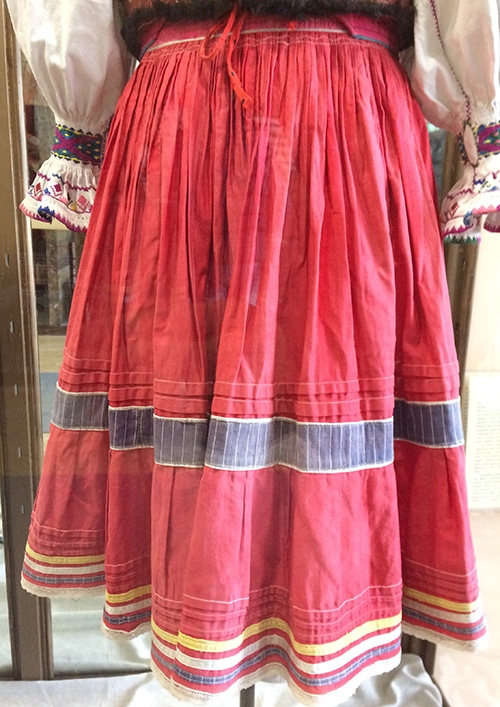
Set of women’s clothes from Transcarpathian region of Ukraine (the most western part of the country), the early 20th century. Close-up view. You can see the apron called “plat” up close
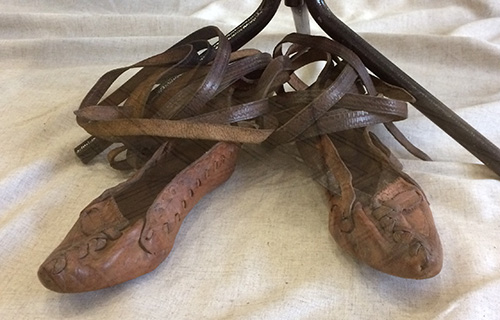
Traditional leather shoes called “khodaky” from Transcarpathian region of Ukraine (the most western part of the country), the early 20th century

Set of female clothes from Lemko region of Ukraine (part of Transcarpathian region, western part of the country), the early 20th century. It consists of a blouse, a skirt, an apron, a sleeveless jacket called “horset”, a bonnet, a kerchief, shoes, and a necklace called “kryza”
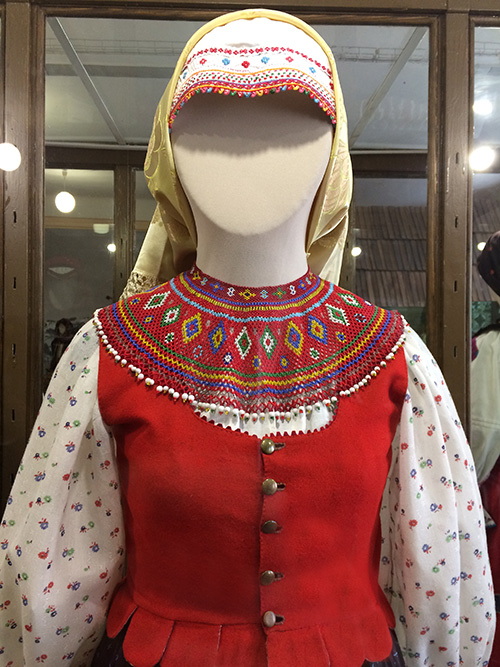
Set of female clothes from Lemko region of Ukraine (part of Transcarpathian region, western part of the country), the early 20th century. Close-up view. You can see the headdress and necklace up close
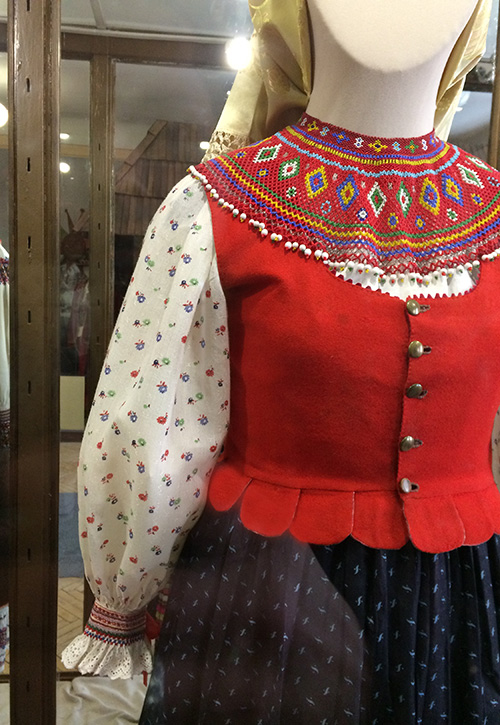
Set of female clothes from Lemko region of Ukraine (part of Transcarpathian region, western part of the country), the early 20th century. Close-up view

Set of women’s clothing from Boyko region of Ukraine (western part of the country), the early 20th century. Close-up view. It consists of a blouse, a skirt, an apron called “zapynka”, a sleeveless jacket called “leibyk”, a fabric belt called “kraika”, a bonnet, a kerchief, high boots, and a necklace called “kryza”

Set of women’s clothing from Boyko region of Ukraine (western part of the country), the early 20th century. Close-up view. You can see the headdress and necklace up close
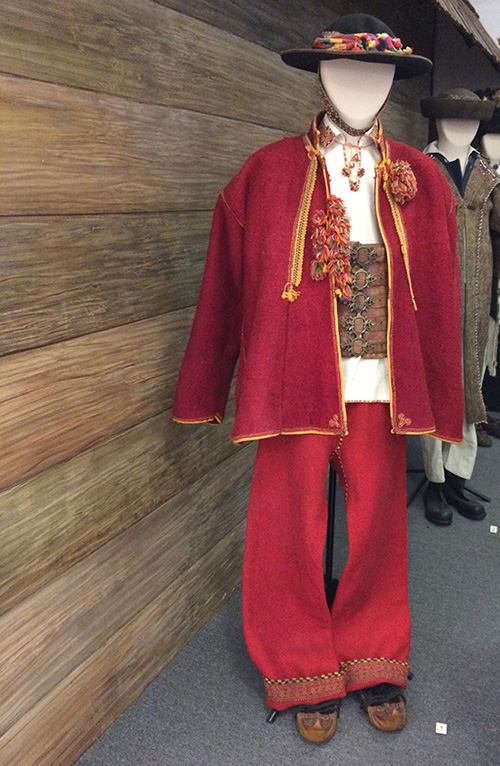
Set of male clothes from Hutsul region of Ukraine (western part of the country), the early 20th century. It consists of a shirt, trousers, a woolen coat called “serdak”, a wide leather belt called “cheres”, a hat called “krysania”, leather shoes called “postoly”, and a small axe
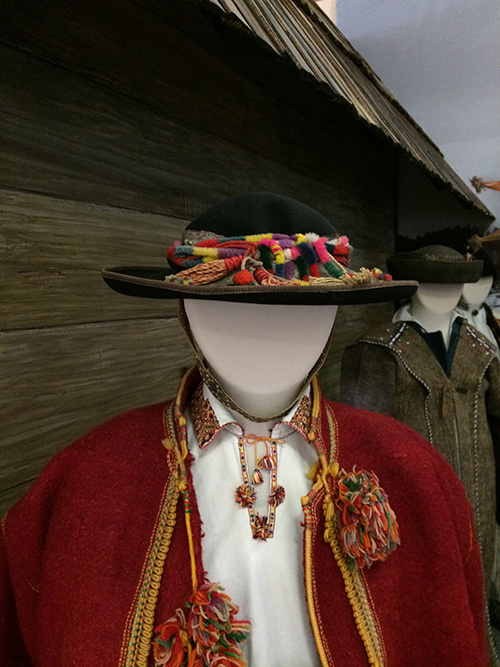
Set of male clothes from Hutsul region of Ukraine (western part of the country), the early 20th century. Close-up view. You can see the hat called “krysania” and embellishments of the woolen coat called “serdak” up close

Set of male clothes from Hutsul region of Ukraine (western part of the country), the early 20th century. Close-up view. You can see the wide leather belt called “cheres” and embellishments of the woolen coat called “serdak” up close
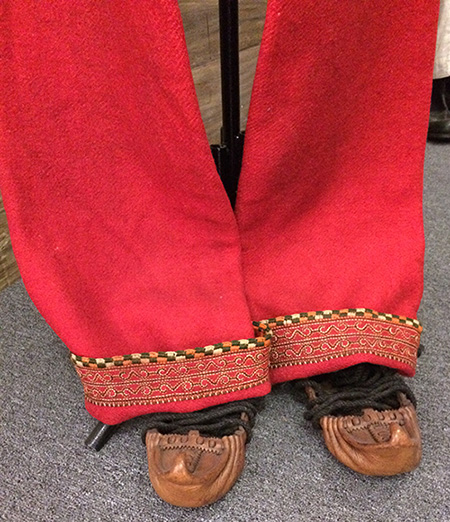
Set of male clothes from Hutsul region of Ukraine (western part of the country), the early 20th century. Close-up view. You can see the woolen trousers with embroidery and leather shoes called “postoly” up close

Male costumes from western part of Ukraine, the early 20th century. The outfit on the left is from Lemko region: a shirt, trousers called “nahavky”, a sleeveless jacket, a coat called “chugania”, a belt, a felt hat, and high boots. The attire on the right is from Boiko region: a shirt, trousers called “hachi”, a sleeveless fur coat called “bunda”, a leather belt, a Karakul hat, shoes called “khodaky”, and a jewelry piece on the collar of the shirt

Set of male clothing from Boiko region of Ukraine (western part of the country), the early 20th century. It consists of a shirt, trousers called “hachi”, a sleeveless fur coat called “bunda”, a leather belt, a Karakul hat, shoes called “khodaky”, and a jewelry piece on the collar of the shirt
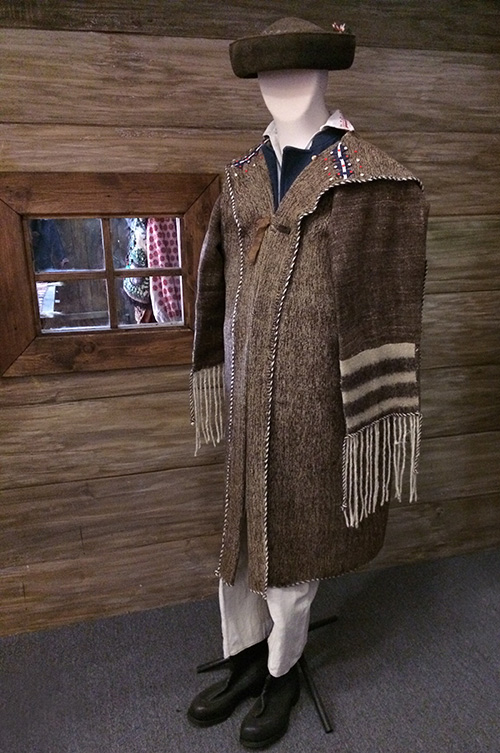
Set of male clothes from Lemko region of Ukraine (western part of the country), the early 20th century. It consists of a shirt, trousers called “nahavky”, a sleeveless jacket, a coat called “chugania”, a belt, a felt hat, and high boots
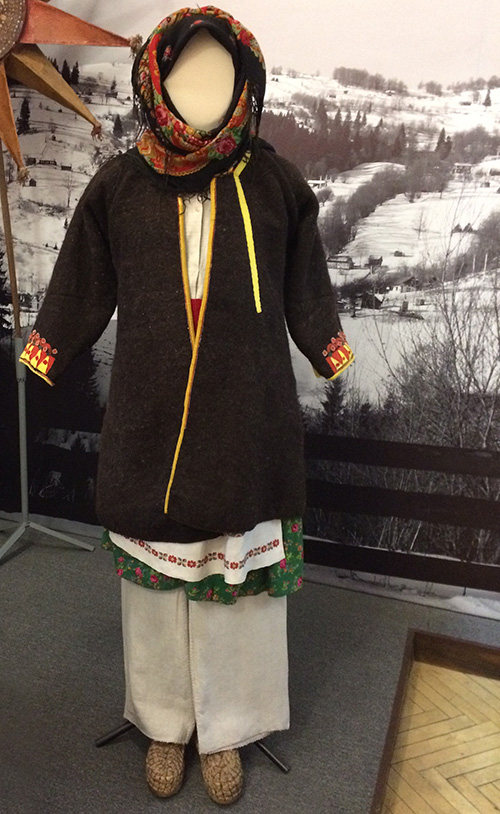
Traditional costume for Malanka carnival festivities (are held in Ukraine and Belarus on January, 13), the early 20th century. It consists of a shirt, trousers, a skirt, an apron, a peasant overcoat, a fabric belt, a kerchief, and shoes
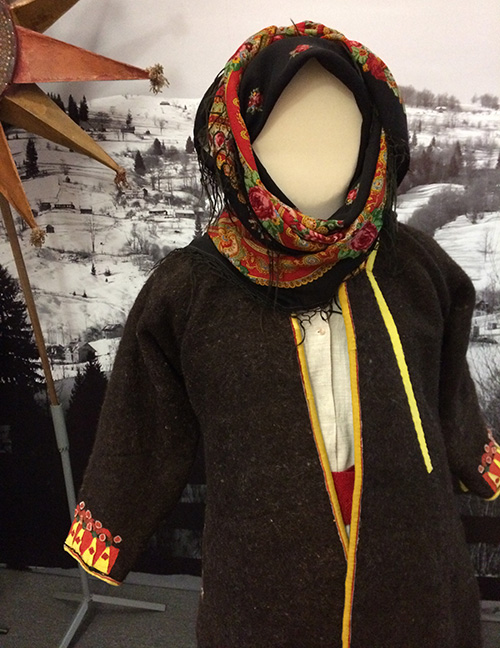
Traditional costume for Malanka carnival festivities (are held in Ukraine and Belarus on January, 13), the early 20th century. Close-up view
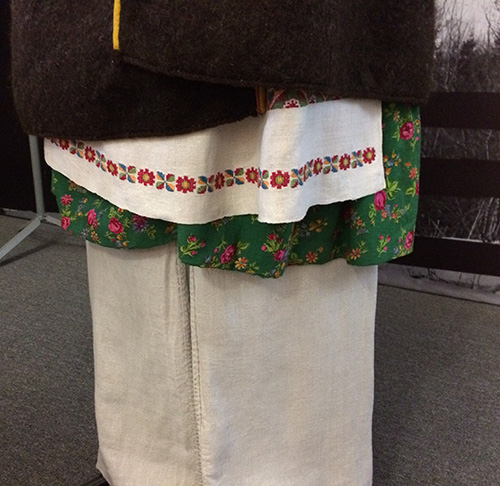
Traditional costume for Malanka carnival festivities (are held in Ukraine and Belarus on January, 13), the early 20th century. Close-up view. You can see the trousers, skirt, and apron up close
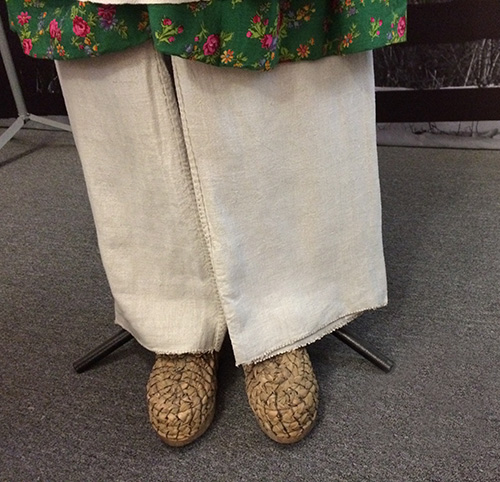
Traditional costume for Malanka carnival festivities (are held in Ukraine and Belarus on January, 13), the early 20th century. Close-up view. You can see the trousers and shoes up close
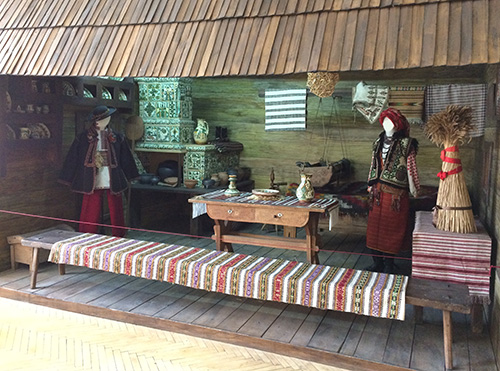
Traditional village house interior from Hutsul region of Ukraine (western part of the country), the early 20th century
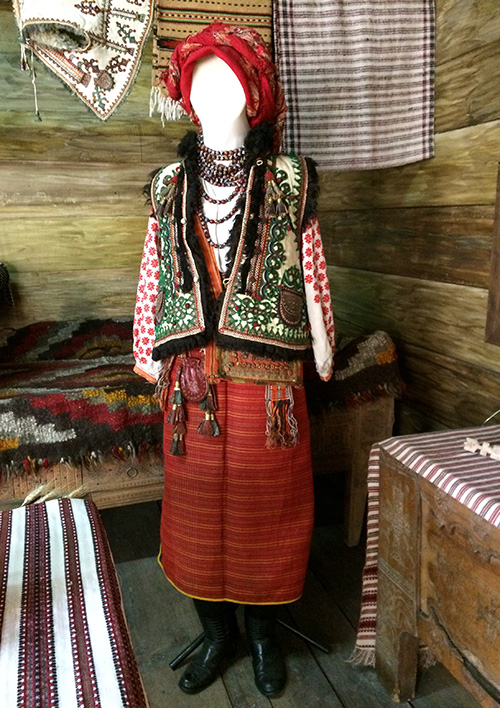
Set of women’s clothing from Hutsul region of Ukraine (western part of the country), the early 20th century. It consists of a blouse, a wrap-around skirt called “zapaska”, a sleeveless fur coat called “keptar”, a fabric belt called “kraika”, a kerchief, high leather boots, a Venetian necklace, a bag, and a purse called “kalytka”
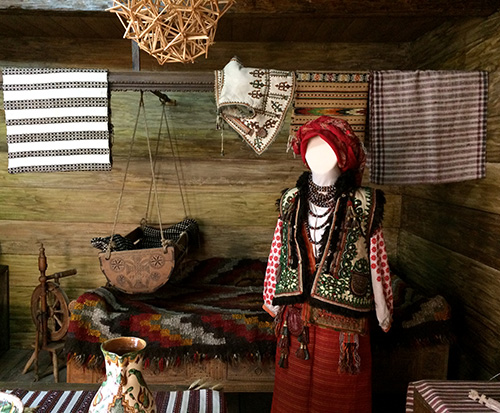
Set of women’s clothing from Hutsul region of Ukraine (western part of the country), the early 20th century. Close-up view
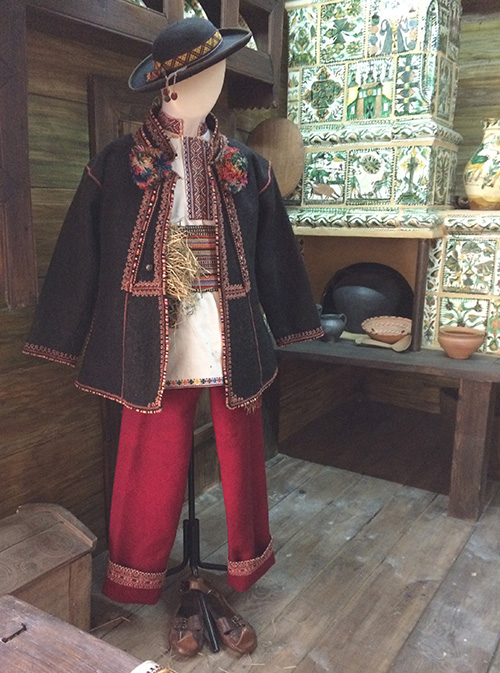
Set of men’s clothes from Hutsul region of Ukraine (western part of the country), the early 20th century. It consists of a shirt, trousers, a woolen coat called “serdak”, a fabric belt called “kraika”, a hat called “krysania”, and shoes called “postoly”
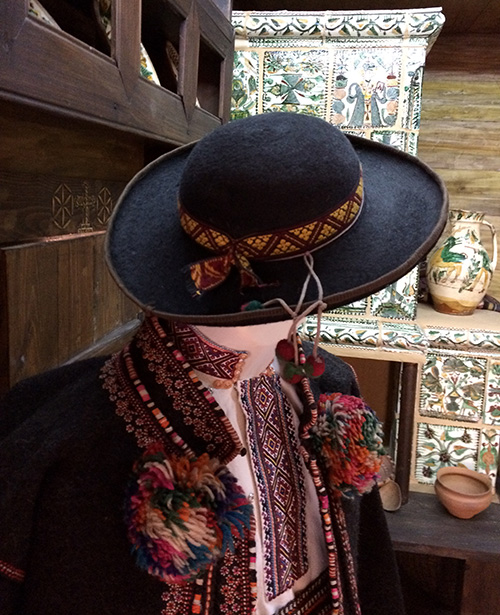
Set of men’s clothes from Hutsul region of Ukraine (western part of the country), the early 20th century. Close-up view. You can see the hat called “krysania” and embellishments of the woolen coat called “serdak”
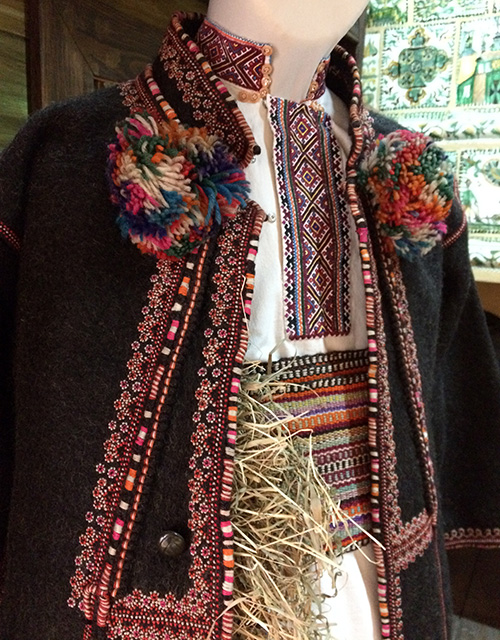
Set of men’s clothes from Hutsul region of Ukraine (western part of the country), the early 20th century. Close-up view. You can see the embellishments of the woolen coat called “serdak”, the belt, and the embroidery pattern on the shirt

Set of men’s clothes from Hutsul region of Ukraine (western part of the country), the early 20th century. Close-up view. You can see the trousers and shoes called “postoly”
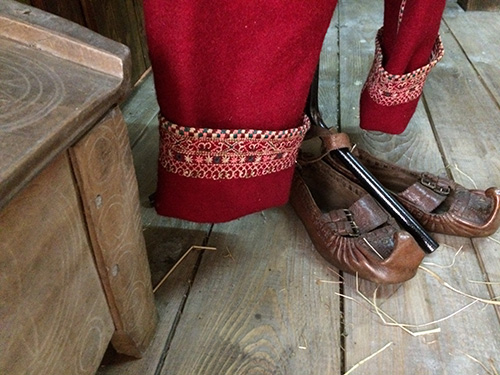
Set of men’s clothes from Hutsul region of Ukraine (western part of the country), the early 20th century. Close-up view. You can see the embroidery pattern on the trousers and shoes called “postoly”
